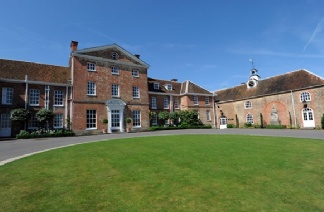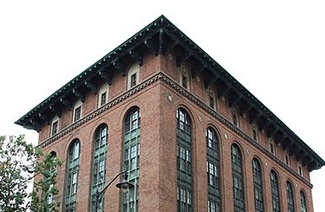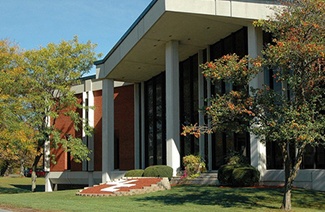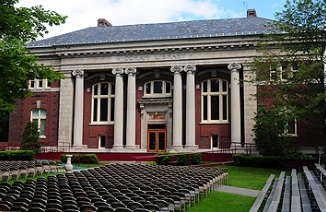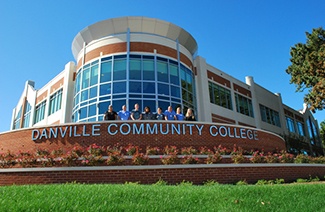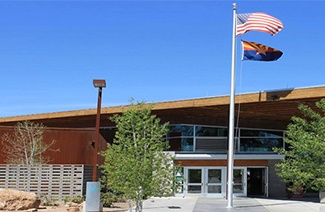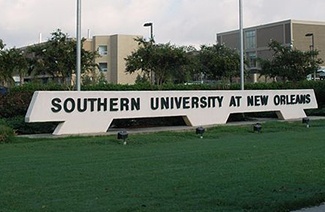要想在
Nearly a century ago, biologists found that if they
separated an invertebrate animal embryo into two parts
at an early stage of its life, it would survive and develop
as two normal embryos. This led them to believe that the
(5) cells in the early embryo are undetermined in the sense
that each cell has the potential to develop in a variety of
different ways. Later biologists found that the situation
was not so simple. It matters in which plane the embryo
is cut. If it is cut in a plane different from the one used
(10) by the early investigators, it will not form two whole
embryos.
A debate arose over what exactly was happening.
Which embryo cells are determined, just when do they-
become irreversibly committed to their fates, and what
(15) are the “morphogenetic determinants” that tell a cell
what to become? But the debate could not be resolved
because no one was able to ask the crucial questions
in a form in which they could be pursued productively.
Recent discoveries in molecular biology, however, have
(20) opened up prospects for a resolution of the debate.
Now investigators think they know at least some of the
molecules that act as morphogenetic determinants in
early development. They have been able o show that,
in a sense, cell determination begins even before an egg
(25) is fertilized.
Studying sea urchins, biologist Paul Gross found
that an unfertilized egg contains substances that func-
tion as morphogenetic determinants. They are located
in the cytoplasm of the egg cell; i.e., in that part of the
(30) cell’s protoplasm that lies outside of the nucleus. In the
unfertilized egg, the substances are inactive and are not
distributed homogeneously. When the egg is fertilized,
the substances become active and, presumably, govern
the behavior of the genes they interact with. Since the
(35) substances are unevenly distributed in the egg, when the
fertilized egg divides, the resulting cells are different
from the start and so can be qualitatively different in
their own gene activity.
The substances that Gross studied are maternal
(40) messenger RNA’s --products of certain of the maternal
genes. He and other biologists studying a wide variety
of organisms have found that these particular RNA’s
direct, in large part, the synthesis of histones, a class
of proteins that bind to DNA. Once synthesized, the
(45) histones move into the cell nucleus, where section of
DNA wrap around them to form a structure that resem-
bles beads, or knots, on a string. The beads are DNA
segments wrapped around the histones; the string is the
intervening DNA. And it is the structure of these beaded
(50) DNA strings that guides the fate of the cells in which
they are located.
1. The passage is most probably directed at which kind of
audience?
(A) State legislators deciding about funding levels for a
state-funded biological laboratory
(B) Scientists specializing in molecular genetics
(C) Readers of an alumni newsletter published by the
college that Paul Gross attended
(D) Marine biologists studying the processes that give
rise to new species
(E) Undergraduate biology majors in a molecular
biology course
2. It can be inferred from the passage that the
morphogenetic determinants present in the
early embryo are
(A) located in the nucleus of the embryo cells
(B) evenly distributed unless the embryo is not
developing normally
(C) inactive until the embryo cells become irreversibly
committed to their final function
(D) identical to those that were already present in the
unfertilized egg
(E) present in larger quantities than is necessary for the
development of a single individual
3. The main topic of the passage is
(A) the early development of embryos of lower marine
organisms
(B) the main contribution of modern embryology to
molecular biology
(C) the role of molecular biology in disproving older
theories of embryonic development
(D) cell determination as an issue in the study of
embryonic development
(E) scientific dogma as a factor in the recent debate over
the value of molecular biology
4. According to the passage, when biologists believed that
the cells in the early embryo were undetermined, they
made which of the following mistakes?
(A) They did not attempt to replicate the original
experiment of separating an embryo into two parts.
(B) They did not realize that there was a connection
between the issue of cell determination and the
outcome of the separation experiment.
(C) They assumed that the results of experiments on
embryos did not depend on the particular animal
species used for such experiments.
(D) They assumed that it was crucial to perform the
separation experiment at an early stage in the
embryo’s life.
(E) They assumed that different ways of separating an
embryo into two parts would be equivalent as far
as the fate of the two parts was concerned.
5. It can be inferred from the passage that the initial
production of histones after an egg is fertilized takes
place
(A) in the cytoplasm
(B) in the maternal genes
(C) throughout the protoplasm
(D) in the beaded portions of the DNA strings
(E) in certain sections of the cell nucleus
6. It can be inferred from the passage that which of the
following is dependent on the fertilization of an egg?
(A) Copying of maternal genes to produce maternal
messenger RNA’s
(B) Sythesis of proteins called histones
(C) Division of a cell into its nucleus and the cytoplasm
(D) Determination of the egg cell’s potential for division
(E) Generation of all of a cell’s morphogenetic
determinants
7. According to the passage, the morphogenetic
determinants present in the unfertilized egg cell are
which of the following?
(A) Proteins bound to the nucleus
(B) Histones
(C) Maternal messenger RNA’s
(D) Cytoplasm
(E) Nonbeaded intervening DNA
8. The passage suggests that which of the following plays a
role in determining whether an embryo separated into
two parts will two parts will develop as two normal
embryos?
Ⅰ.The stage in the embryo’s life at which the separation
occurs
Ⅱ. The instrument with which the separations is
accomplished
Ⅲ. The plane in which the cut is made that separates
the embryo
(A) Ⅰonly
(B) Ⅱ only
(C) Ⅰ and Ⅱ.only
(D) Ⅰ and Ⅲ.only
(E) Ⅰ,Ⅱ, and Ⅲ
9. Which of the following circumstances is most
comparable to the impasse biologists encountered in
trying to resolve the debate about cell determination
(lines 12-18)?
(A) The problems faced by a literary scholar who wishes
to use original source materials that are written in
an unfamiliar foreign language
(B) The situation of a mathematician who in preparing a
proof of a theorem for publication detects a
reasoning error in the proof
(C) The difficulties of a space engineer who has to
design equipment to function in an environment in
which it cannot first be tested
(D) The predicament of a linguist trying to develop a
theory of language acquisition when knowledge of
the structure of language itself is rudimentary at best
(E) The dilemma confronting a foundation when the
funds available to it are sufficient to support one of
two equally deserving scientific projects but not both
